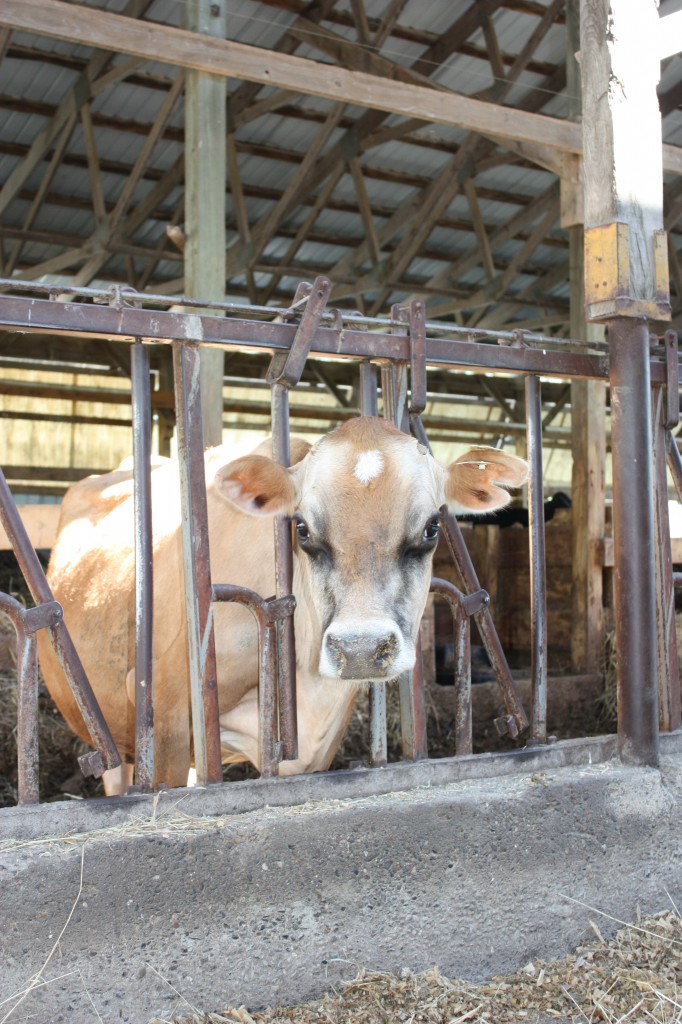First published in the Miner Institute Farm Report. Written by Kevin Jacque.
In a recent article by a popular show cattle magazine, a well-known brood cow passed away at the age of 20. This is certainly not typical of modern commercial dairies, but many farmers have heard of or owned cows reaching their later teens and early twenties. With the ever-increasing impact of welfare science, is it right to have older cows (greater than five years of age) represent a larger proportion of our herd? How do we deal with these old girls as they enter the herd in subsequent lactations? What would consumers prefer to see or know?
What does it take to have older cows? Why do you want older cows around your farm? Milk production plateaus at about lactation six or seven, but what is the benefit of older, productive, strong, and sturdy cows? Older cows make more milk ─ end of story. Every farmer knows that he or she does not make a profit on a cow until the second or third lactation. The cost of raising replacements increases every year, sometimes costing over $2000 per heifer. More older cows means we need fewer replacements around which means lower heifer raising costs. Older cows also have less risk of dystocia, so it’s possible to have more live calves depending on the current rates of stillbirth and caesarian sections. Perhaps we should evaluate our records and see where we stand on stillbirth rates, non-voluntary culling (mastitis, metritis, lameness, poor conception), and voluntary culling rates (poor genetics). Could we benefit? Where is the breaking point between profitable, mixed-aged herds, and decreased replacements with building larger barns and bigger stalls? Honestly, we do not have sound numbers yet, but you might figure that out for your farm.
Older cows require more space (bigger stalls) and more feed. Maybe big, old cows over 1800 pounds will not fit in your parlor. Do we have to renovate or build a special pen for the older cows? Are the stalls wide enough? Do we need stalls that are more than 54” wide? How can you afford to build a barn for bigger animals? What about disease? Older cows will have greater exposure to pathogens due to age alone. How can you manage your farm so that disease is of lower risk? Management is your friend and your foe. Each producer will find a balance between vaccinations, barn cleaning, pen movements, and disease control to maximize the herd’s potential.
If we do have more older cows, why are they staying around? Do we like the genetics of the cow line or family? Does she milk well? Does she breed back? Is she docile enough, but not overly stubborn? A 2009 University of Florida Beef Research Report found that docile beef cows were more likely to have better conception rates. Maybe this translates to dairy cows, too. Maybe our old cow is a certain girl we just can’t get rid of–even though she’s had mastitis five times, metritis four times, frostbitten ears, three teats, and a bum foot.
This brings us to the topic of welfare. We can’t change those who hate us, but we can put those in the questionable area of “I’m not sure about modern agriculture” back on track to trust our industry and the way we care for our animals. We’ve discussed that older cows will make more milk. Why shouldn’t our cows be able to live longer? Don’t we profit more from older cows? Are we justifying new stalls because we hate fixing them or because they are too small for our cows? Are we culling because we have to or because we want to? Do we have a lot of lame cows in our herd and do we even notice them? Don’t we owe our cows comfortable, long lives?
Once again it all comes down to management. Who is on your team? Are your nutritionist, veterinarian, calf manager, herd manager, financer, and employees all on the same page? Come up with a plan to reduce non-voluntary culling, decrease lameness and disease, ensure adequate bunk and resting space, and record the changes; only then can you see how old your cows live and how thorough of a job you are doing. More and more people are watching. Will you make more milk and profit wisely from these big old girls, or will you see them leave on the truck?


